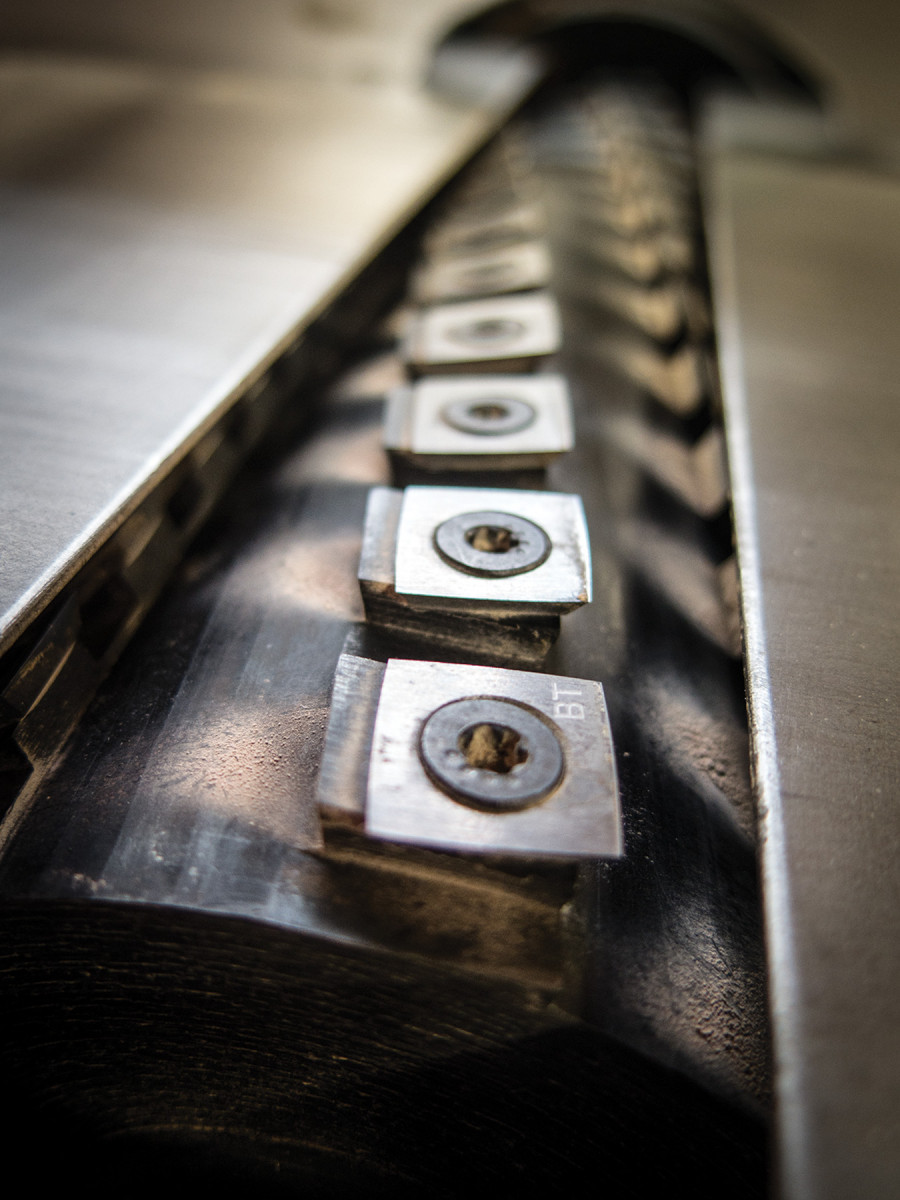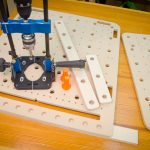We may receive a commission when you use our affiliate links. However, this does not impact our recommendations.

Circular logic. Is this cutterhead the giant wheel of industrial oppression or the means to escape it? It depends.
Grab your torch and pitchfork; the hand-tool guy has a table saw.
Editor’s note: this article appeared in the November 2016 issue of Popular Woodworking
People react with shock and horror when they learn I have electric machinery in my Kentucky workshop.
After all, I’ve been writing almost exclusively about handwork for almost 20 years now. And yet anyone who is more than an acquaintance knows that I adore heavy iron, and that I coddle my machines like prize French bulldogs. So what’s the deal?
I like all the woodworking tools, from chisels to CNC routers. I want to know them all – inside and out – so I can do my best work with the smallest amount of stupidity swirling around in my shop. Here are two simple examples:
Stupid: Making a jig to cut a compound angle on the table saw.
Not stupid: Knifing a line and cutting the compound angle with a carcase saw.
Stupid: Processing 200 board feet of rough lumber with a jack plane.
Not stupid: Using an electric jointer and planer to do the work in an afternoon.
Perhaps I’m just trying to be efficient, but I don’t see it that way. I choose different tools or machines to remain a furniture maker at all times. I don’t want to become a machinist where jigs, numbers and precision measuring tools guide my work. And I don’t want to be a donkey, using the little time I have on this earth to do a mindless chore (ripping 12/4 maple) out of some affectation.
What’s also part of this is that I refuse to acknowledge a difference between using hand tools and machines. For me, the tools are neutral. What imbues them with menace or joy is how they are used.
When I worked at a door factory, the radial-arm saw we used to cut stiles and rails was the symbol of my subjugation there. I was chained to that machine for the entire day, scared witless that I would lose a finger.
In contrast, my table saw at home puts food on the table. It allows me to work for myself – not at some factory – and to spend my day designing furniture, cutting dovetails and assembling bits of wood instead of ripping, ripping and ripping some more.
You might think this attitude would lead me to use machines for everything. Not so. I use handplanes constantly. They touch every surface of my work. I don’t use them out of some reverence for the past. I use them because they are faster than sanding (there’s only one “grit” – done) and leave a superior surface.
But you only get to see this trade-off if you know both sides intimately – both the drum sander and the smoothing plane.
So why do I write almost exclusively about handwork? That’s easy. During the last 60 years, using woodworking machinery has been covered to death and to perfection. We don’t need another book of router jigs, or tips on tuning a band saw, or Swiss-Army-knife-like fixtures for the table saw.
The world of handwork is endless – you can never know it all because there is more than 2,000 years of recorded history with these tools to explore. I’m just trying to balance the equation and help return handwork to its rightful place in the shop.
But you can bet that if the pendulum swings too far, I’ll be happy to write about the unfettered joy that’s possible from a spiral carbide cutterhead.
Here are some supplies and tools we find essential in our everyday work around the shop. We may receive a commission from sales referred by our links; however, we have carefully selected these products for their usefulness and quality.








